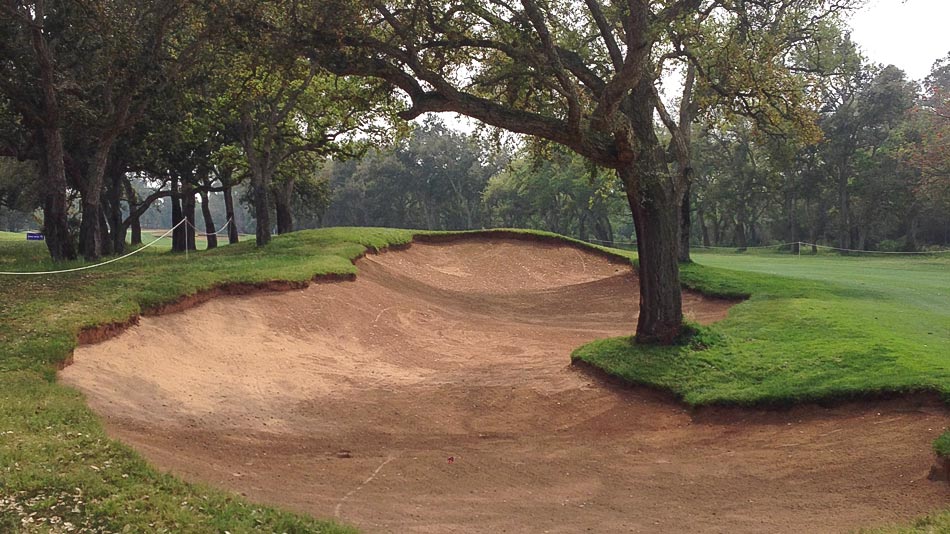The Red course at the Royal Dar Es Salaam club in the Moroccan capital, Rabat, originally designed by Robert Trent Jones Sr, is being renovated in a project led by longtime Coore & Crenshaw senior associate James Duncan. The course is a regular host venue for the European Tour’s Trophée Hassan II, and hosted the most recent event last week.
“I went to Morocco last spring as a guest of Prince Moulay Rachid to look at some of the country’s golf courses,” said Duncan. “Representatives of the Moroccan golf federation had contacted Coore & Crenshaw, but it was very unlikely that they would be able to fit a Moroccan project into their schedule, so I spoke to Bill Coore, and we agreed that I would travel to Morocco for discussions. My friend and associate Tom Dunne had spent time in Morocco the year before and come back with a really good impression of the country, its golf courses and the people behind them, which fuelled my interest.”
Duncan told GCA that he had been impressed by the setup at Royal Dar Es Salaam, and especially by the Red course. “I said to the Moroccan authorities ‘What is it that you want to achieve?’” he said. “They said they realised that the course needed a little bit of dusting off, that the fairways had become very narrow, leaving only one way to play it, and that they were aware that continually lengthening and tightening it would make it more difficult, but not necessarily more interesting. But they also said that a lot of people had looked at the course and given them different advice – that half the forest should be cut down, or even that the clubhouse should be moved – but they felt the course’s bones were strong and this sort of major surgery wasn’t necessary. I agreed, so we discussed what sort of tweaks would make it better, and then we got to work.”

Scottish shaper Benjamin Warren is working with Duncan on the project, which started last year with the renovation of the course’s fairway bunkers. “The bunkers had really become just flat pads of sand, so we wanted to give them a little bit more interest. We also added four new bunkers,” said Duncan. “From that, we moved onto grassing lines – we have helped them widen the fairways and make the golf course more strategically interesting. Then we shut down the job to allow the crew to prepare the course for this year’s Trophée. Now that is past, we are mobilising again to return to the site and rebuild the green complexes. There is a plan to put in a new irrigation system to provide more reliable coverage, and also to switch from potable to recycled waste water to irrigate the course. We hope to get the course to a point where they can stop overseeding in the winter. At the moment, they have to, because the warm season grasses don’t quite overwinter well enough to provide a good surface for the tournament, but we and they are well aware that overseeding is environmentally harmful, and our goal is to put them in a position where they don’t have to.”
Duncan and his team are making use of a 600 page file from the Trent Jones archive at Cornell University, which contains all Jones’s original greens drawings. He said: “I see Dar Es Salaam as the Moroccan Pinehurst. It is really the flagship for golf in the country, it gets masses of play from golfers of all shapes and sizes.”